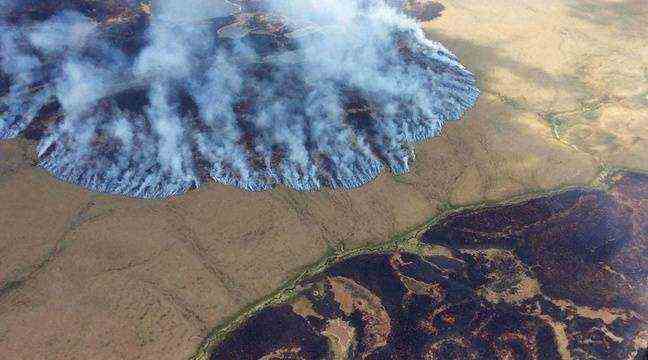A fire in Alaska in 2015. – Matt Snyder
The risk: that they become more frequent because of global warming. “Zombie” fires, which smolder in bogs and are capable of burning underground and under a layer of snow during winter, tend to resume after hot summers, according to a study published this Wednesday in the journal Nature. These fires had notably caused gigantic fires in the Arctic in 2020.
To arrive at their conclusions, researchers used satellite data to trace the fire season in Alaska and northwestern Canada over a period of seventeen years. It shows that extreme summer temperatures and an intense fire season allow some fires to penetrate the carbon-rich peatland soil, which feeds them during the winter.
Carbon comes from the soil
“When people think of forest fires, they think of burning trees,” says Sander Veraverbeke, of the Free University of Amsterdam and co-author of the study. “But in these areas of the Far North, in the boreal forests, about 90% of the carbon emitted comes from the soil”. Snow also plays an insulating role, he continues.
According to this study, these “zombie” fires remain relatively rare and contributed to 0.8% of burnt areas between 2002 and 2018. But this varies greatly depending on summer temperatures, with a figure that has climbed to 38% of burnt areas. one year.
Plan to fight better
This suggests that the phenomenon could therefore worsen with global warming, according to the researchers. Temperatures are rising faster in the polar regions than in other areas of the world. The Arctic as a whole experienced its second warmest year on record in 2020, 2.2 ° C above the 1981-2020 average.
For Sander Veraverbeke, predicting where these “zombie” fires will emerge, based on the fires of the previous year, would allow them to be better combated.

